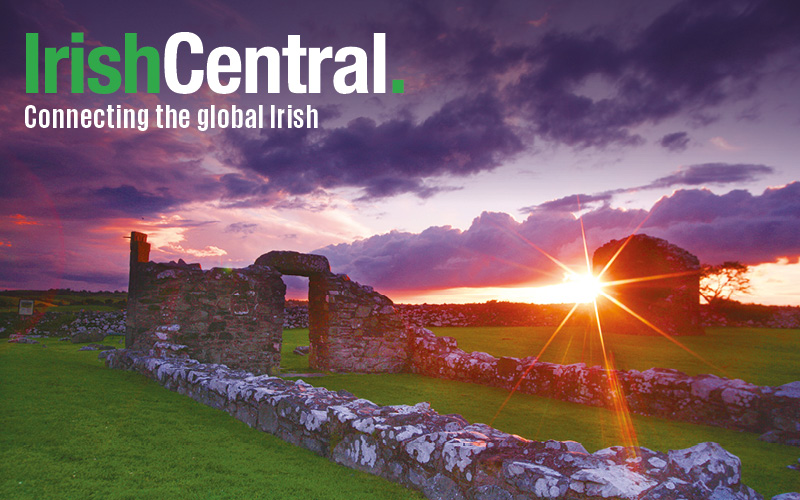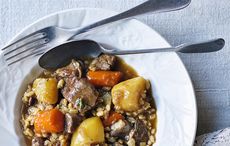Carna, Connemara - When you are looking for a gathering to spend a May bank holiday weekend there are some wonderful choices along the Wild Atlantic Way, especially when your interests veer towards traditional music and dance festivals.
At the newly resurgent Shannon Airport I ran into people from Boston and Maryland at the car rental counter who were heading to the Cuckoo Festival in Kinvarra, Co. Galway and Féile Chois Cuain in Louisbourg, Co. Mayo. But I set my own sights on sampling the Féile Chomórtha Joe Einniu (Joe Heaney Commemorative Festival) in the village of Carna in Connemara where the iconic sean nos singer was born and buried.
For 28 years Heaney, here in Carna, has been remembered annually through this wonderful boutique festival hosted on the southern flank of the inspirational landscape that defines this part of Ireland. It recognizes his accomplishments and furthers the important work and attention he brought to the native culture of the Connemara Gaelthacht throughout his life.
Heaney’s extraordinary story and life’s journey took him through the British Isles and eventually to America where I first became aware of him back in the 1970s when he was still living in Brooklyn while working as a doorman in New York City. He was recorded by both Topic Records in England and Gael-Linn records in Ireland as one of the pre-eminent bilingual sean nos singers of any era.
Wherever he went he carried an intense love and dedication to his native language, Irish, and its songs and stories. Eventually folk music enthusiasts and ethnomusicologists qualified him as an authentic original source recreating “history’s page” for Ireland’s Gaelic heritage.
He immigrated to America in 1965 after receiving an invitation to the Newport Folk Festival in the height of the revival years for folk music. In his later years both Wesleyan University and the University of Washington in Seattle validated the knowledge he carried by bringing him on staff to teach and inform their students and research in Irish studies.
Heaney’s legacy was further burnished in 1982 when he received a National Heritage Award from the National Endowment for the Arts for the massive contributions he made towards the propagation of Irish culture in the U.S.
After Heaney’s passing in 1984 at the age of 64, his burial in his native Carna was so well attended and remembered even a year later on the anniversary, the local school principal Michael O Cuaig decided that an annual festival dedicated to the celebration of the Gaelic heritage that Heaney epitomized would be very much in order.
With his own passion for the rich culture that defines the value of Ireland’s Gaelthacht, O Cuaig designed an annual program that while rooted in preserving the past, trumpets its present day vitality and important focus on passing along these traditions to younger people as well.
O Cuaig’s easy-going approach to presenting artists and the audiences who gather each year into an entertaining and informative mix helps sustain Gaelic culture at a time when that support is necessary even within Ireland.
Irish may be the principle medium for his introductions and for the singing and speaking elements over the weekend, but the positive and welcoming atmosphere present here knows no linguistic bounds.
And even multiculturalism can come very much into play as this year a performance group from Norway attended and performed, and a number of Europeans (and Americans) also were enticed to attend the festival which has a very firm grasp on what it is about.
The weekend got off to a good start when a local artist with nationwide recognition as an actor, poet and playwright, Joe Steve O Neachtain offered the opening address and told the audience about the importance of Irish culture in the national identity looking forward for the 1916 centenary.
A special ceremony and presentation was made to the widow and family of the late Tom Davis, a noted archivist and recorder of many historic Irish music events for decades who passed away last year.
In a poignant moment and reflective of the ethos of the Heaney festival in general, a rare recording made by Davis of Heaney singing “My Own Native Land” was shared with the audience, many hearing it for the first time since it doesn’t appear on any commercial recordings.
Though I wasn’t present for that occasion, the sheer depth of the song and the gra for Ireland reflected in the lyrics makes for a very fitting anthem from the Heaney repertoire that sends chills up the spines of all those who share its sentiments.
Many folks who follow the music and dance scene know that Connemara has long been both a reservoir and bastion for the sean nos tradition for singing, dancing and, of course, the Irish language, so this particular festival holds a pride of place in doing so.
Along with presenting wonderful Irish singers like Treasa Ni Cheannabhain, Padraic O Ceannabhain and Roisin Elsafty (and the Donegal singer Rita Gallagher who taught and sang in English), the solo dance tradition was well represented by Roisin Ni Mhainin and Patricia Ni Fhathata and Proinsias and Breandan Hernon, all part of the marvelous revival we have seen in recent years in the sean nos singing and dance traditions at the Oireachtas.
Good festivals like this also find ways to reach across borders for sympathetic, like-minded artists, so a Norwegian group known as Hallingdal Latelag was invited along with several artists from Scotland like Mary Mac Millan and Linda Nic Leoid and the Friel Sisters.
Of course the Friel Sisters, who produced their own solo album this year, seemingly spend as much time in Ireland as they do in their native Glasgow. They are very proficient in Irish music both in singing and instrumentally thanks to their Donegal parents who still maintain an active involvement in the homeplace.
The continuity of this festival would also depend on artists who return year after year or act as friends of the festival unofficially by attending or performing regularly.
Since Marcus Hernon and his family live in Carna they would seem obvious choices, but their presence is not to be taken for granted because of the energy and integrity they bring to both their Irish music and dance performances.
Add singer Don Stiffe from Headford to their mix and you have a lively ensemble for the ceili portion of the evening that propels people onto the dance floor for old time waltzes or for the Connemara Sets that suit their grand style of playing and tunes.
This year there were pipers a plenty, with Mick O’Brien performing with his daughter Ciara (on fiddle), Tommie Keane and his wife Jacqueline McCarthy (on concertina) and Sile Friel.
The Waterford piper David Power, who has been coming to Connemara for years, was a special guest for a launch of The Eighteen Maloney CD, a masterful solo display of his powerful piping.
There is a wonderful family vibe and attention to the young folks as well in the classes and even in a singing competition on the Sunday that produces a magnificent cup in the name of Joe Heaney to one of the young singers. The multigenerational mix at all events also is noteworthy and most indicative of the living tradition that surrounds the festival.
Like some other festivals in Ireland dedicated to the birthplace of musical heroes, there is a graveside commemoration that stirs the heart in a celebratory way that one doesn’t usually associate with cemeteries. Heaney’s gravesite lies along that western ocean that was of huge importance to those who remained in this part of Connemara, providing a livelihood from the sea or those who sought passage to far-distance climes due to the hard times they endured here.
Buried throughout the cemetery are a number of people who came before and after Heaney who preserved the Gaelic heritage that enriched their lives and assured them a place on history’s page when describing why it still thrives after so many assaults against it over the centuries, including many self-inflicted ones from today’s society who has no use for a “dead language.”
A visit to this festival would clearly convince them otherwise.
The Feile Chomortha Joe Einniu takes place the first weekend of May in University College Galway’s outreach facility known as Aras Shorcha Ni Ghuairim and the Carna Bay Hotel (www.carnabay.com). More information is available at www.Joeheany.org or by contacting [email protected].




Comments